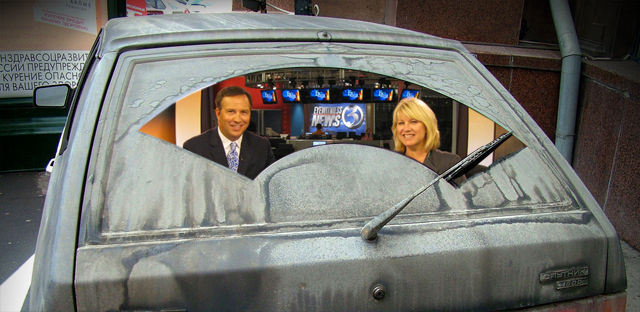Transparency Is Not a Four-Letter Word

The FCC's proposed rules could shed light on all kinds of things ... including the source of your local news.
Everyone loves transparency. (For me, it brings to mind those “The More You Know” public service announcements). And as FCC Commissioner Mignon Clyburn put it at October’s FCC open meeting, “Disclosure and transparency: words that inspire confidence, increase the public’s trust and convey good faith. We’re seeing, hearing and focusing more and more each day on ways to enhance these efforts in both our public- and private-sector engagement.”
As the Internet’s seemingly endless wealth of data continues to grow, everyone from journalists to students to everyday people are finding new ways to utilize the information available to them. From police reports to the federal budget to maps of outer space, a culture of information and knowledge is winning out over dark clouds of secrecy in everything from government to science to academia.
Wouldn’t it be nice if we could add our local broadcasters to that list? Well, we may be making progress on that front.
At last Thursday’s FCC meeting, the Commission proposed that local TV broadcasters modernize their disclosure practices and make information more readily accessible to the public.
Television stations get free, exclusive use of the publicly owned airwaves. The Communications Act of 1934 mandates that, in return, broadcasters serve “the public interest, convenience and necessity.”
Let’s break that down a bit.
Public Interest
Part of that whole “public interest” obligation involves requiring broadcasters to maintain public files. These files must contain information about the ways in which stations serve their communities. Broadcasters must detail things like who owns the station and what programming has been aired that serves the public interest. Broadcasters also need to include both materials related to FCC investigations and complaints and the station’s political file, which contains data on campaign and PAC advertising spending.
This last point is particularly crucial in the wake of the Supreme Court’s 2010 Citizens United decision, which removed all restrictions on corporate and union spending on campaign ads. Spending is expected to exceed $2 billion in the 2012 election cycle. Unfortunately, broadcaster records on how and where groups are dropping cash for TV ads, while technically public, have not been very accessible — but that may soon change.
Convenience
That brings us to the “convenience” part. These files live in the past – stuffed into cabinets and shelves in broadcast stations’ basements and closets – instead of the place we all expect to find information when we need it: the Internet. So naturally one would expect that a broadcaster’s “public files” would be available online.
At this point, they’re not. The only way to find out what a local station is doing to serve community needs is to sift through mountains of dusty files. As a group of media activists in South Carolina recently discovered, that requires taking time off from work and traveling to the station, which in rural areas may be located hundreds of miles away from viewers’ homes. One staff person who assisted these activists was so unfamiliar with the requested file that she brought them the wrong information. She told them that in her four years on the job, not a single person had ever before asked to see the station’s public file.
At its October meeting, the Commission released a Notice of Proposed Rulemaking which would require broadcasters to put their public files online – increasing transparency and access to this important information. What could be more convenient than that?
Necessity
There’s a fundamental code to a functioning democracy: Armed with information, citizens are better able to make decisions. But despite the explosion of data available today, there’s a gaping hole when it comes to knowing what’s going on in our own back yards.
Local TV is still the primary news source for the majority of Americans. Are the stories broadcast the product of real reporting, or are they fake news stories sponsored by commercial interests? Is the news on the local CBS affiliate actually produced by the local FOX station through a covert consolidation deal? How much news are the stations airing, and how much of it counts as local coverage? And in the coming election year — when special interests will sink billions of dollars into local stations — how much actual reporting will stations provide? Will it be dwarfed by the number of political ads they will air?
The outcome of the FCC’s current proceeding could require broadcasters to divulge all of this information, and make it available online. Right now, most of this vital information about where our news comes from can’t even be found in stations’ archaic paper files.
The FCC’s step toward transparency and sunlight is a victory for the public. And it must be protected from those who would prefer we plummet back into darkness and secrecy.